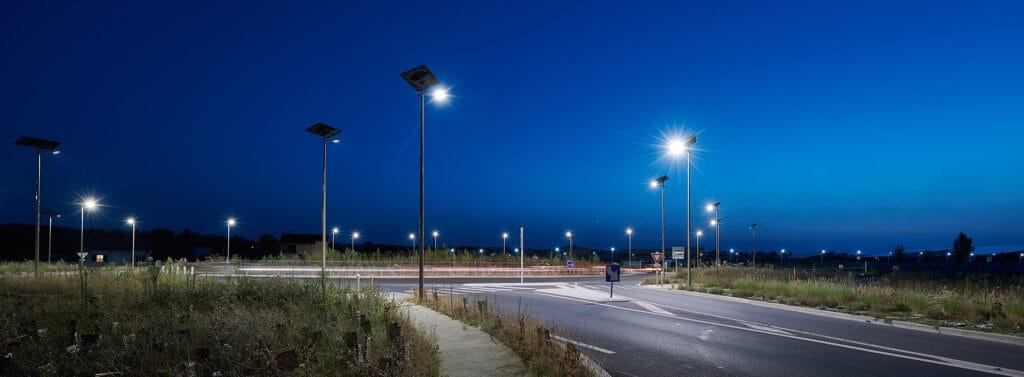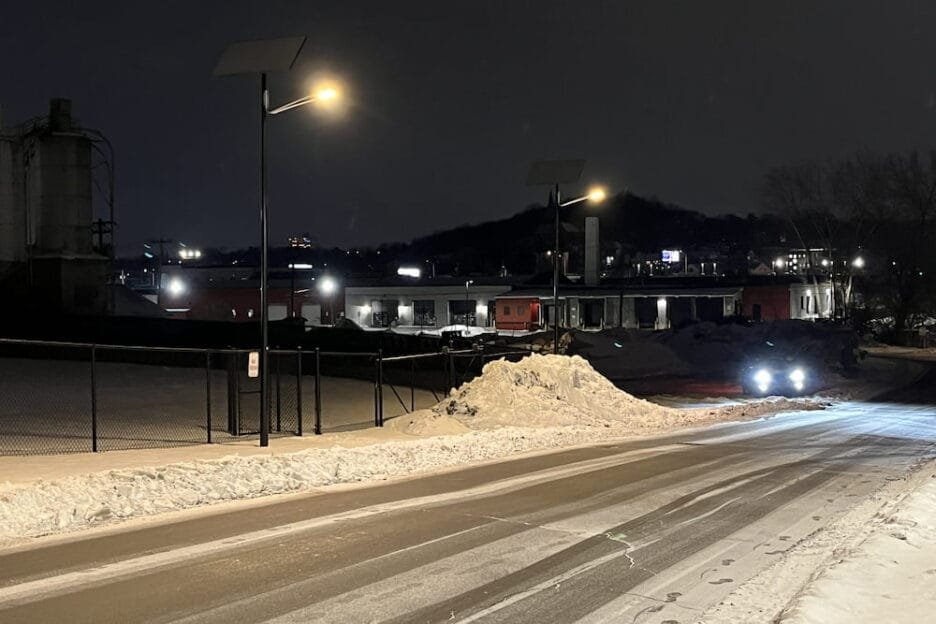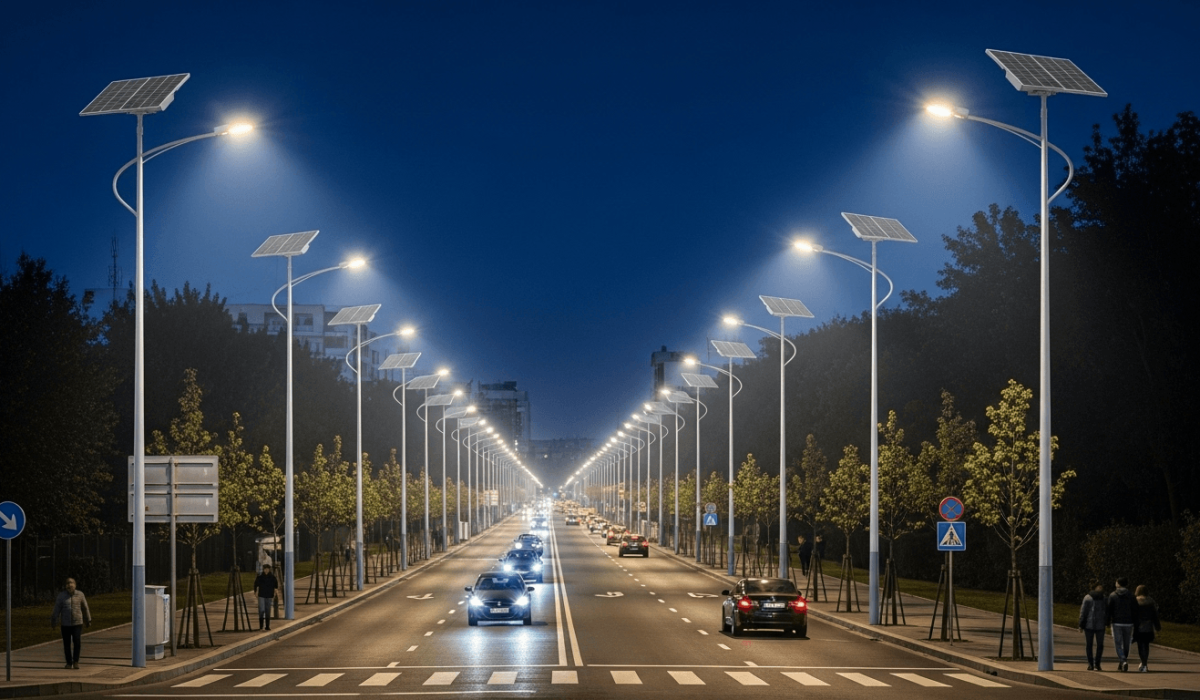Why Do Parking Lots Need Better Lighting?
Last year, I visited a shopping complex in Nairobi’s Westlands district. The owner showed me his monthly electricity bill—nearly $1,200 just for parking lot lighting. Despite the expense, half the lights were flickering, and some corners stayed dark because underground wiring had failed.
That situation is not unique. Across Africa, contractors and property managers are under pressure to keep parking areas safe, well-lit, and affordable to maintain. Traditional grid lighting often means high bills, frequent repairs, and long installation timelines.

Over the years, I’ve seen many sites—schools in Uganda, hospitals in Tanzania, and municipal lots in Ethiopia—turn to solar street lights for parking lots. They’re not perfect in every situation, but in most cases, they solve more problems than they create.
What Exactly Are Solar Street Lights for Parking Lots?
Put simply, they are standalone lighting units powered by the sun. Each light combines:
- Solar panels that collect energy during the day.
- LED lamps that provide bright and efficient illumination at night.
- Batteries to store energy—especially critical during cloudy weeks or rainy seasons.
- Smart sensors to manage motion detection and dusk-to-dawn operation.
Unlike grid lights, they don’t need trenching or cabling. In one project at a secondary school in Uganda, we installed 25 poles in just two days. The fact that no electrician had to dig through paved areas saved both time and money.
What Are the Key Benefits of Using Solar Street Lights for Parking Lots?
1. Energy Savings That Show Up on the Bills
In Dar es Salaam, we replaced 40 grid-powered lights at a hospital parking lot with solar-powered parking lot lighting. Before the switch, their monthly bill for outdoor lighting was around $900. After installation, it dropped to almost zero—they only pay for occasional maintenance.
That’s the type of saving most clients notice right away. Of course, the upfront cost is higher, but when the payback comes in three to five years, few regret the investment.
2. Low Maintenance, Especially Compared to Grid Lights
LED solar street lights are built for resilience. The fixtures we install often last 50,000+ hours, and lithium batteries generally perform well for five to seven years.

In most cases, property managers only call us once every few years for a battery check. Compare that to conventional systems where bulbs burn out every few months and underground cabling suffers damage from water ingress. In Kampala, one client told me trenching repairs were costing more than the electricity itself. That’s when solar started making sense.
3. A Noticeable Boost in Safety and Security
Lighting isn’t just about visibility—it’s about security. In Arusha, Tanzania, a retail center reported fewer car break-ins after we installed solar street lights with motion sensors. Drivers felt safer walking back to their cars, and security staff appreciated the automatic brightening when people approached.
Are solar lights a silver bullet for crime? No. But well-lit spaces make a big difference, and contractors know safety compliance is often non-negotiable in tenders.
4. Eco-Friendly Choice That Fits Global Trends
Many municipalities and NGOs now prioritize eco-friendly parking lot lighting. Every solar light means less carbon output and less reliance on unreliable grids.
For example, one NGO-led project in northern Kenya received partial funding because the lighting plan aligned with sustainability targets. Without the solar component, the project might not have secured donor approval.
Of course, the environmental benefit depends on proper end-of-life recycling for panels and batteries—but overall, the footprint is far lighter than diesel or grid-powered systems.
5. Cost-Effectiveness Over the Long Term
Here’s a quick comparison we often share with clients:
| Factor | Grid Lighting | Solar Street Lighting |
|---|---|---|
| Upfront Cost | Low | Moderate |
| Monthly Bills | High | Zero |
| Maintenance | Frequent | Minimal |
| ROI | 8–10 years | 3–5 years |
Some contractors still hesitate because of upfront costs. But with green energy rebates now common in certain countries, and the elimination of trenching work, the actual gap is narrower than people expect.
6. Flexible and Fast to Install
In one project for a rural clinic in Western Kenya, we installed 12 poles in less than a day—without touching the main grid. That’s a big contrast to urban projects where grid wiring delays can add weeks.
The flexibility also helps when layouts change. A shopping mall in Mombasa expanded its parking lot last year, and instead of hiring a contractor to rewire the entire area, they simply moved four solar poles and added six new ones.
What Other Advantages Should Contractors Keep in Mind?
- Smart automation: dusk-to-dawn operation means no manual switching.
- Scalability: from 5-lot villages to 500-car commercial centers.
- Design flexibility: slimmer, modern poles that blend with landscaping.

These may seem secondary, but when you’re bidding for projects, details like modern design often help win contracts.
What Should You Consider Before Installing Solar Street Lights for Parking Lots?
Not every parking lot is the same. A few factors matter more than others:
- Sunlight availability – in regions with long rainy seasons, battery storage becomes critical.
- Brightness levels – some contractors undersize systems, only to find the lot too dim. Always check lumen output.
- Pole height and spacing – bad layouts can leave blind spots even with good fixtures.
- Local regulations – safety standards may dictate pole strength or spacing, especially in government projects.
Sometimes, I’ve seen projects fail because these basics were overlooked. It’s not just about the product—it’s about proper planning.
So, Are Solar Street Lights for Parking Lots the Best Choice?
Looking at my projects over the past decade, I’d say they often are. In most urban and semi-urban African contexts, the benefits of using solar street lights for parking lots—lower costs, fewer maintenance calls, safer environments, and alignment with green policies—far outweigh the downsides.
That said, adoption still depends on financing and awareness. Many decision-makers remain cautious, worried about durability or battery life. Yet, as technology improves and costs continue dropping, it’s hard not to see where the trend is heading.
The bigger question is: are we ready to make solar the default option for every new parking lot project—or will we keep paying grid bills until we’re forced to switch?


